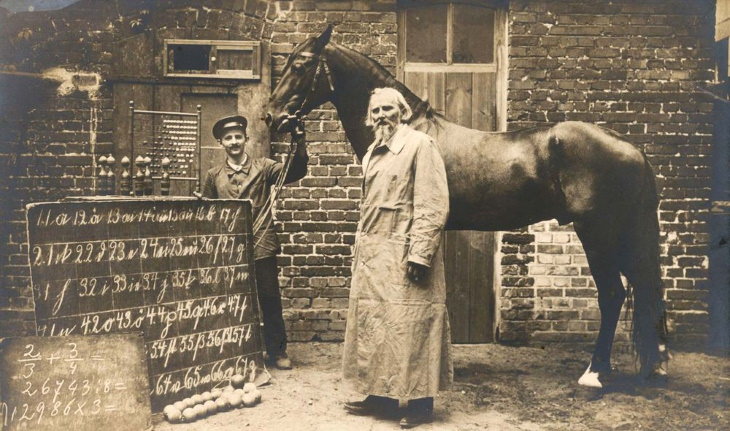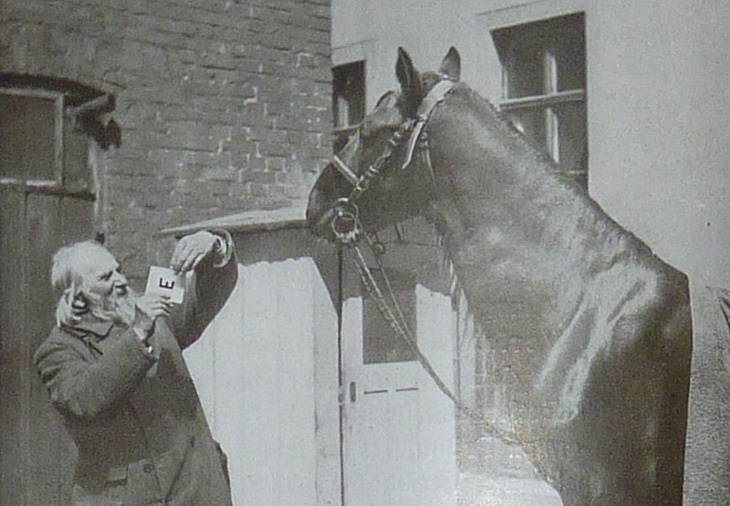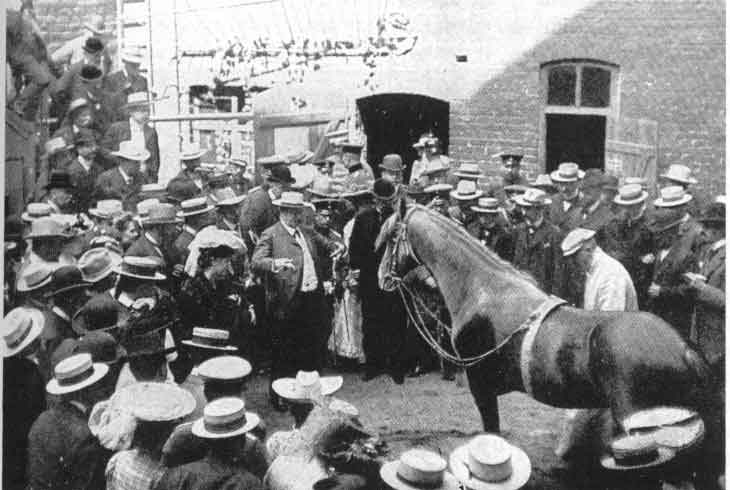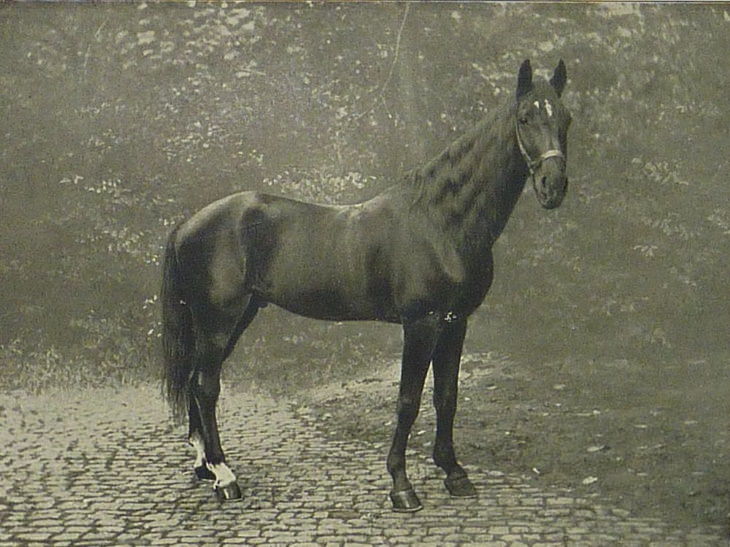Just How Smart Was Clever Hans?
Clever Hans and His Owner, Wilhelm von Osten
Clever Hans was a Russian trotting horse owned by one Wilhelm von Osten, a math teacher who became the horse's instructor and taught him several unimaginable skills through more than a decade. Von Osten taught Hans to nod his head for 'Yes', and shake it for 'No', and communicating numbers to the audience with a tap of his hoof.
Hans was most famous for his arithmetic skills, and don't be mistaken, as his repertoire extended far beyond the simple stuff like counting, adding, and subtraction. He was capable of adding and subtracting fractions and determining the square root of simple numbers, and more. In fact, Hans' abilities extended far beyond math, he could also read the clock, recognize people in photos, tell apart colors, and even spell out certain words and understand German!
Related Article: These Points Prove That Animals Are Smarter Than We Think
Hans Tapping Out the Number on a Floorboard
In sum, the horse's incredible cognitive abilities were on par with the intelligence of a 13-year-old teenager, as Hans completed every task with an astonishing 89% accuracy. During this time in history, the public was just recently exposed to Charles Darwin's theory of evolution, and these writings sparked a great interest in society to animal intelligence.
As a result, Clever Hans' performances and incredible capabilities were an instant hit and an article about him was even published in the New York Times in 1904. His unique case came to show that animals, too, can have an unimaginable intelligence and be even capable of social communication.
Clever Hans and Wilhelm von Osten during a Performance
The Investigation
Hans Demonstrates His Arithmetic Skills
As anticipated, Hans' case aroused a great deal of curiosity in the science community: zoologists, psychologists, and various other researchers interested in animal cognition. While the media continued to praise Clever Hans and his owner for a breakthrough in animal intelligence, scientists couldn't believe that an animal could ever exhibit such an unprecedented resemblance to human intelligence, especially purely anthropomorphic concepts like written language and arithmetic.
As a result, the scientists decided to do what scientists typically do, and the German board of education created a special commission called 'The Hans Commission' in 1904 to investigate the validity of the horse's performance. The chief of the Berlin zoo, a veterinarian, a cavalry officer, a circus manager, and several teachers were involved in the rigorous testing, but they didn't find any trickery or deceitfulness in Hans' abilities.
A Crowded Performance in 1904
After that, the investigation was passed on to Oskar Pfungst, a young psychologist who decided to remove von Osten from the performance and conduct the performance exactly as he did himself. To Pfungst's great surprise, the horse continued getting the right answers even in von Osten's absence, so the possibility that the math teacher was feeding answers to the animal was ruled out.
However, during the first experiment, Oskar Pfungst noted that the horse got a lot fewer answers right when he was standing further away from him, and also that he rarely got the answer right when Oskar himself didn't know the right answer to the question he asked. As a result, the young psychologist started to suspect that Clever Hans may be getting clues from the questioner instead of solving the math task or any other question himself. Oskar believed that the horse may be getting hints of the subtlest changes in the questioner’s demeanor, tone of voice, posture, and facial expressions.
Clever Hans (1910)
In subsequent experiments, he began manipulating these small details and expressions, and like magic, Hans' accuracy dropped dramatically. While these barely perceptible hints were not noticed by the audience or the first commission, it was exactly these clues that helped Hans determine when he should stop tapping. In the end, it turned out that the true extraordinary skill the horse possessed was not near-human intelligence, but impeccable observational skills!
In the end, Clever Hans' case became a famous precedent in psychology, as it turned out that humans and other animals, too, can perceive these microscopic clues from their instructors who know the answer and use them to better their performance in various settings. This psychological effect is known as the Clever Hans Effect today.
Lastly, while Oskar Pfungst's experiments were meaningful for science, they didn't decrease interest to Clever Hans in the public. The horse continued performing for years to come and changed masters several times after von Osten's death in 1909. His last owner and his fate, however, remain unknown.






